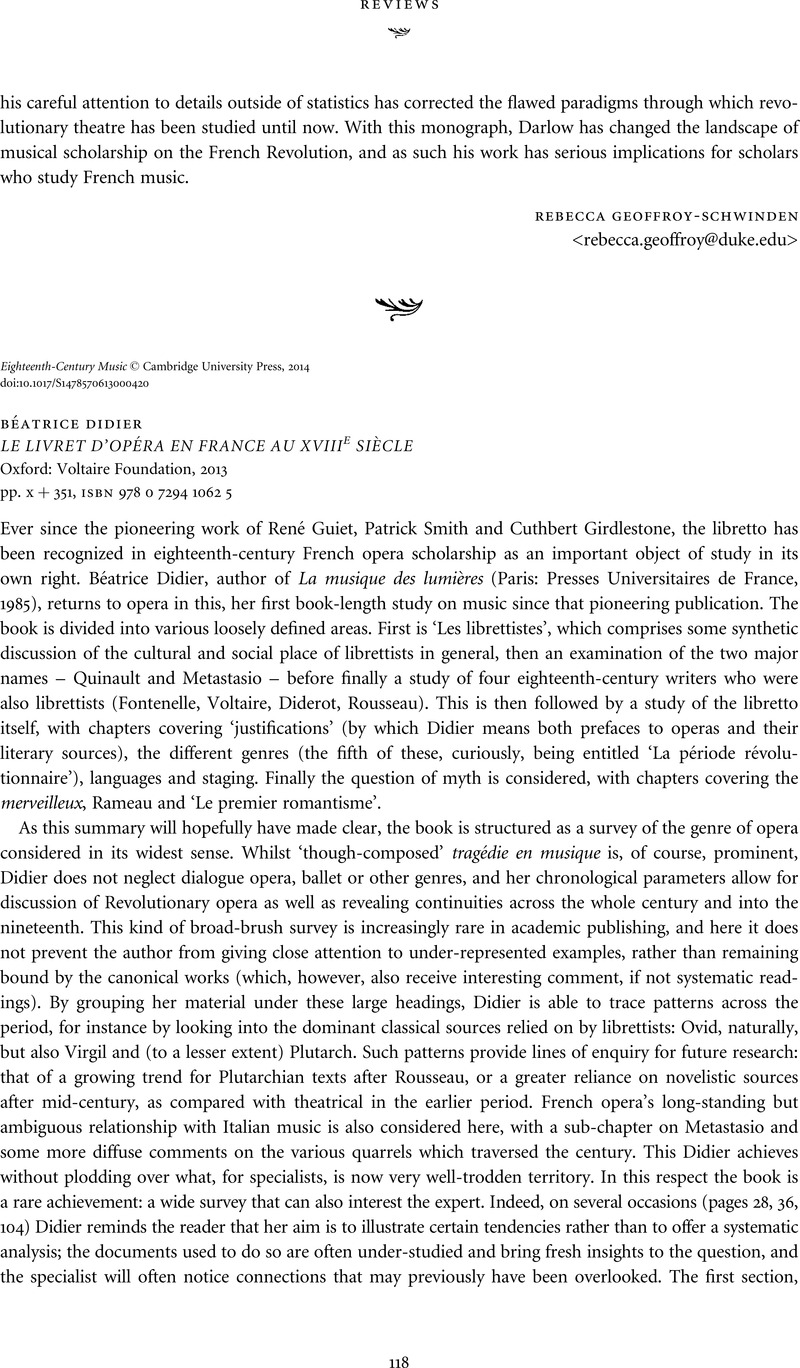No CrossRef data available.
Article contents
BÉATRICE DIDIER Le Livret d'opéra en France au XVIIIe siècleOxford: Voltaire Foundation, 2013pp. x+351, isbn978 0 7294 1062 5
Published online by Cambridge University Press: 03 February 2014
Abstract
An abstract is not available for this content so a preview has been provided. Please use the Get access link above for information on how to access this content.

- Type
- Reviews: Books
- Information
- Copyright
- Copyright © Cambridge University Press 2014




